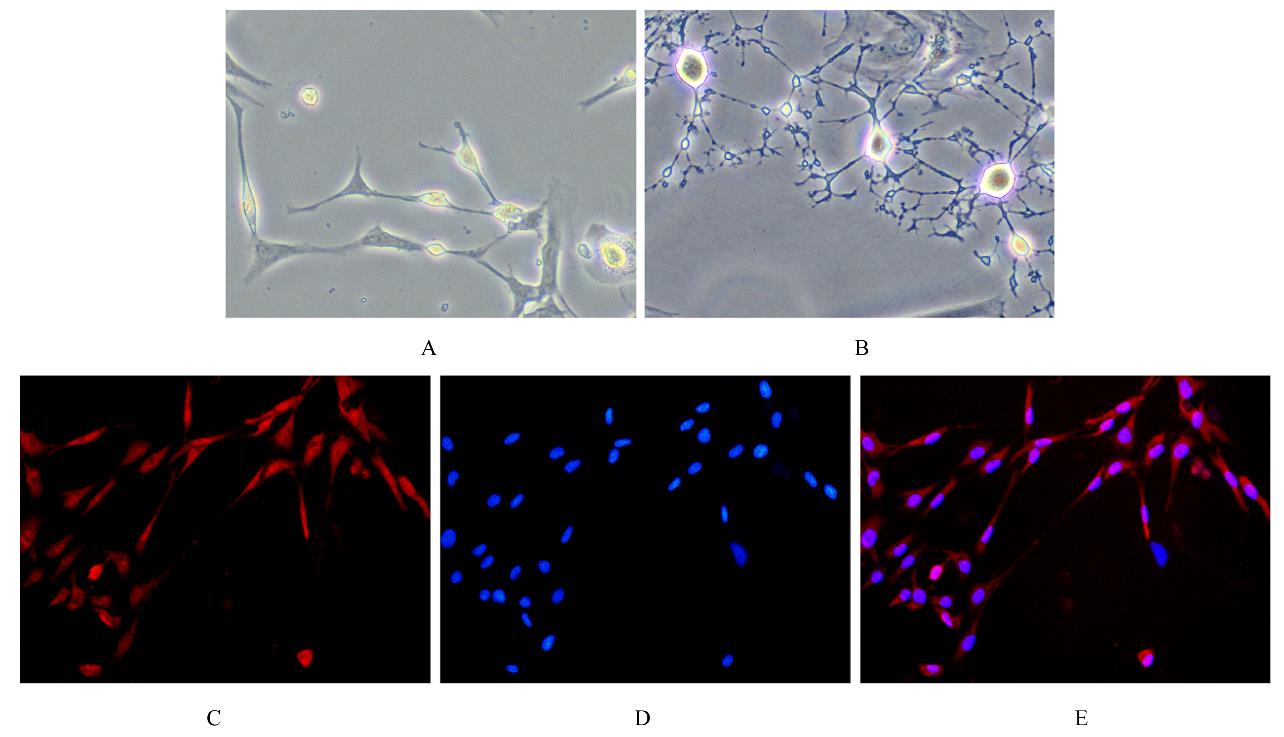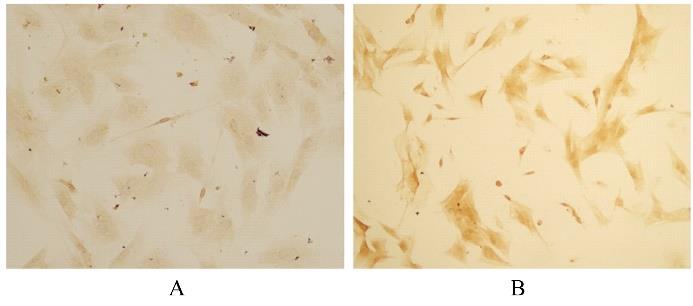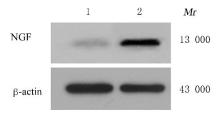吉林大学学报(医学版) ›› 2022, Vol. 48 ›› Issue (3): 684-691.doi: 10.13481/j.1671-587X.20220317
• 基础研究 • 上一篇
施万细胞样细胞对大鼠背根神经节细胞突起生长和神经生长因子表达的影响及其机制
杜元良1,任旺2,刘琳2,胡朔丹2,刘茗宇2,杜鹏飞2,付秀美2,3( )
)
- 1.承德医学院附属医院骨外科,河北 承德 067000
2.承德医学基础医学院人体解剖学教研室,河北 承德 067000
3.河北省神经损伤与修复重点实验室,河北 承德 067000
Effect of Schwann cell-like cells on growth of neurites and expression of nerve growth factor in dorsal root ganglion cells of rats and their mechanisms
Yuanliang DU1,Wang REN2,Lin LIU2,Shuodan HU2,Mingyu LIU2,Pengfei DU2,Xiumei FU2,3( )
)
- 1.Department of Bone Surgery,Affiliated Hospital,Chengde Medical University,Chengde 067000,China
2.Department of Human Anatomy,School of Basic Medical Sciences,Chengde Medical University,Chengde 067000,China
3.Key Laboratory of Nerve Injury and Repair,Hebei Province,Chengde 067000,China
摘要: 探讨施万细胞样细胞(SCLCs)对大鼠背根神经节(DRG)细胞突起生长和神经生长因子(NGF)表达的影响,阐明SCLCs促进DRG细胞生长的作用及其机制。 分离培养脂肪源性干细胞(ADSCs),茜素红染色检测细胞中钙化结节从而观察其分化能力,将其诱导分化为SCLCs,免疫荧光法检测SCLCs 中S100蛋白的表达。分离培养DRG细胞,免疫组织化学染色检测DRG细胞中神经元核抗原(NeuN)蛋白的表达。建立SCLCs与DRG细胞共培养体系,将细胞分为单培养组和共培养组。HE染色观察2组DRG细胞的形态结构,计数2组DRG细胞数和DRG细胞突起数,免疫组织化学染色检测2组DRG细胞中NGF蛋白的表达,Western blotting法检测2组DRG细胞中NGF蛋白表达水平。 原代ADSCs培养7 d,倒置显微镜下可见数量较多、体积较大、呈长梭形的细胞类似旋涡状或铺路石样排列。茜素红染色,镜下可见钙化结节,即所培养细胞具有分化能力。免疫荧光染色,大多数细胞均呈S100染色阳性,即ADSCs可成功诱导分化为SCLCs。培养72 h后,DRG细胞突起细而长、呈花环样排列,7~8 d后,细胞数量进一步增加,胞体较大,呈圆形,突起细长,相互连接似栅栏样。免疫组织化学染色,几乎所有细胞核均被标记为棕褐色,呈NeuN染色阳性。与单培养组比较,共培养组DRG细胞数及细胞突起数均明显增加(P<0.05),共培养组DRG细胞中NGF蛋白表达水平明显升高(P<0.05)。 共培养条件下SCLCs可增加DRG细胞数和细胞突起数,提高DRG细胞中NGF蛋白的表达,发挥促进DRG细胞生长的作用。
中图分类号:
- R322.8












